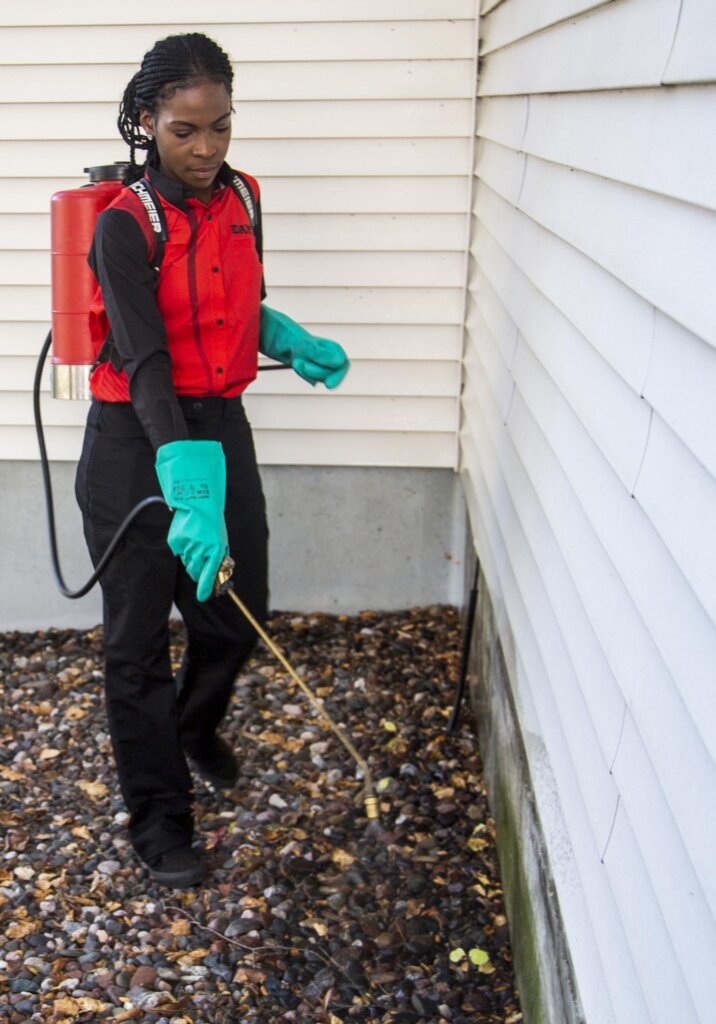Checking Out Infestation and Therapy Techniques in the Globe of Bug Control
The landscape of bug control incorporates a myriad of challenges, particularly as invasions of typical house pests continue to develop. By incorporating preventative actions with advanced management techniques, such as Integrated Insect Administration (IPM), home owners can much better guard their settings.

Common Home Pests
When it pertains to handling our space, recognizing usual house pests is essential. These insects not only disrupt our comfort but can also position health risks and damage residential or commercial property. The most prevalent household pests include ants, cockroaches, rodents, termites, and bed insects.
Ants, usually seen foraging in cooking areas, can pollute food and develop big colonies. Rats, including computer mice and rats, can trigger structural damages and carry conditions like hantavirus and salmonella.
Acknowledging the signs of these parasites, such as droppings, nests, or bite marks, is essential for very early intervention (Pest Control Lockhart). Appropriate sanitation techniques, sealing access points, and keeping a clutter-free environment are reliable preventative steps. By recognizing these typical house insects and recognizing their habits, home owners can take positive actions to reduce problems, guaranteeing a much healthier living environment
Comprehending Parasite Infestations
Insect problems can escalate rapidly, transforming a small inconvenience right into a significant issue otherwise addressed quickly. Recognizing the nature of these infestations is important for reliable management. Insects can get into household and commercial spaces for different factors, consisting of the search for food, shelter, or breeding grounds. Typical aspects adding to infestations include bad cleanliness, architectural susceptabilities, and seasonal adjustments that drive pests indoors.
Determining the type of insect is vital, as different species exhibit different actions and reproductive prices. As an example, rodents might develop nests in concealed locations while bugs like cockroaches thrive in damp environments. Early detection often depends upon recognizing signs such as droppings, munch marks, or uncommon noises, which can indicate a problem prior to it ends up being severe.
Ecological problems also play a vital duty in bug expansion. Cozy, moist climates can facilitate the quick growth of pest populaces, while changes in landscape design or building can inadvertently develop favorable environments. Consequently, routine inspections and preventative procedures are critical to mitigating the danger of infestations. An informed strategy to understanding these characteristics prepares for efficient pest administration strategies in the future.
Treatment Techniques and Strategies
Effective treatment techniques and methods are essential for reducing bug problems and recovering a safe environment. A diverse technique is usually best, incorporating chemical, biological, and mechanical techniques tailored to the certain bug and the extent of the problem.
Chemical therapies consist of using insecticides and herbicides, which can effectively eliminate insects. Nevertheless, appropriate application and adherence to security guidelines are important to lessen dangers to people and non-target microorganisms. Integrated Pest Management (IPM) urges the wise use chemicals as a last option, continue reading this depending instead on monitoring and threshold degrees to establish treatment requirements.
Organic control methods entail presenting all-natural killers or bloodsuckers to lower parasite populations. This approach is significantly prominent, particularly in farming settings, as it advertises environmental sustainability.
Mechanical approaches, such as traps and obstacles, offer immediate remedy for pests without presenting chemicals. Options consist of sticky traps for bugs or physical obstacles for rodents.
Ultimately, the selection of treatment approach should take into consideration the particular parasite, the atmosphere, and possible impacts on human wellness and communities. A well balanced mix of these methods can properly handle problems while promoting long-lasting parasite control solutions.
Precautionary Actions for Homes
Proactively attending to pest problems prior to they rise is vital for preserving a healthy and balanced home setting (Pest Control Lockhart). Executing efficient safety nets can substantially lower the likelihood of infestations, eventually securing both your residential or commercial property and wellness

Correct landscape design additionally plays a crucial duty in avoidance. Maintaining bushes and trees cut away from your home decreases the possibilities of insects finding their way inside. In addition, make certain that water drainage systems are working effectively to avoid standing water, which can attract insects and various other bugs.
Lastly, regular assessments are recommended. Routinely looking for indicators of bug activity enables early intervention. By taking on these safety nets, home owners can produce an environment that is much less congenial to parasites, consequently enhancing their total lifestyle and reducing the requirement for comprehensive parasite control interventions.
Business Insect Control Approaches
A detailed approach to business pest control is necessary for companies intending to maintain a risk-free and sanitary environment. Efficient methods include a mix of routine inspections, worker training, and the implementation of Integrated Bug Monitoring (IPM) practices.
Routine inspections allow very early discovery of insect task, permitting for timely intervention. Organizations should establish a regular timetable for these assessments, focusing on risky locations such as kitchen areas, storage space rooms, and waste disposal websites. Staff member training is equally important; team should be educated on the indications of bug problems and the importance of reporting them instantly.
Carrying out IPM techniques aids mitigate pest issues sustainably. This includes habitat adjustment, such as sealing entrance points and minimizing clutter, in addition to utilizing all-natural deterrents prior to turning to chemical therapies.

Additionally, teaming up with a qualified parasite control provider ensures access to expert my latest blog post knowledge and advanced therapy alternatives. This collaboration can cause personalized insect control prepares tailored to the specific demands of the organization, decreasing threats and improving general efficacy. Ultimately, an aggressive and enlightened technique promotes a pest-free environment, safeguarding both public wellness and service track record.
Conclusion
In final thought, reliable insect control demands a comprehensive understanding of typical house insects and their actions, coupled with targeted treatment approaches. Implementing precautionary actions alongside therapy approaches such as Integrated Pest Administration and organic control enhances the ability to alleviate problems.